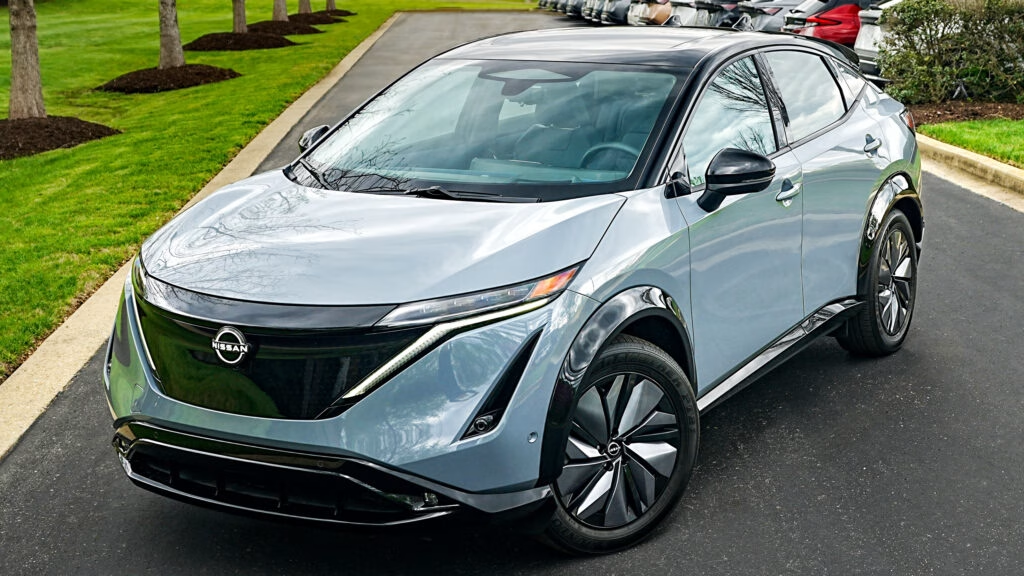Why Is Nissan Pulling the Plug on the Ariya in the US?
If you’ve been eyeing the Nissan Ariya as your next electric crossover, here’s the scoop: Nissan will discontinue Ariya sales in the United States after the 2025 model year. The move, confirmed by Nissan, comes as part of a larger shakeup in their EV strategy. Instead of doubling down on the Ariya, Nissan is shifting its focus—and resources—toward the next-generation 2026 Leaf, which promises to be the most affordable new EV on the American market.
So, what’s behind this sudden pivot? According to Nissan, the US electric vehicle landscape is changing fast. Consumers are increasingly looking for practical, wallet-friendly EVs, and the Ariya—while stylish and tech-forward—lands at a higher price point than many buyers are comfortable with, especially as federal tax incentives for EVs are set to expire soon. Add in the fact that the Ariya is built in Japan and thus subject to tariffs (even after recent trade agreements trimmed those duties to 15 percent), and it’s easy to see why Nissan is rethinking its approach.
What Happens to Ariya Owners and Inventory?
If you already own an Ariya or are considering grabbing one before they’re gone, there’s some good news. Nissan has made it clear that existing owners will continue to receive full service, parts, and warranty support. As for new buyers, dealer inventory will stick around until it’s sold out—so if you want an Ariya, now’s the time to act.
Nissan hasn’t ruled out bringing the Ariya back for 2027, but there’s no official word yet. The company says it’s keeping a close eye on market trends and will adjust its lineup as needed to match consumer demand. Translation: if the market swings back in favor of higher-end crossovers, the Ariya could make a comeback.
How Does the Ariya’s Performance Stack Up?
Despite its short run, the Ariya has actually been a solid performer for Nissan in the US. In the first half of this year alone, Nissan delivered 11,619 Ariyas—making it the brand’s best-selling EV stateside and marking a 24.3 percent jump over the same period last year. For comparison, the outgoing Leaf managed 3,925 deliveries, which, while lower in volume, still represented a 28 percent year-over-year increase.
These numbers show that the Ariya has found its niche, especially among buyers looking for a tech-savvy, comfortable electric crossover. But generous incentives have played a role in those sales, and with Nissan tightening its belt after a reported $5 billion loss for the financial year ending in April, every model’s profitability is under the microscope.
Why Is Nissan Betting Big on the 2026 Leaf?
The next-generation Leaf is at the heart of Nissan’s new EV strategy. The company is betting that a smaller, more affordable electric hatchback will better align with what US buyers want right now: value, efficiency, and practicality. Nissan says the 2026 Leaf will have the lowest starting MSRP of any new EV in the country—a bold claim, but one that could shake up the entry-level EV segment.
This isn’t just about price, though. The new Leaf is expected to come with updated tech, improved range, and a design that’s more in tune with today’s tastes. By reallocating resources from the Ariya to the Leaf, Nissan hopes to capture a bigger slice of the mainstream EV market, where competition is fierce and margins are razor-thin.
What Does This Mean for Nissan’s Future in the EV Market?
Nissan’s decision to pause the Ariya isn’t happening in a vacuum. The company is in the midst of a global restructuring, led by new CEO Ivan Espinosa. That means plant closures, workforce reductions, and a hard look at every model in the lineup. The goal? To build a leaner, more profitable business that can weather the ups and downs of the rapidly evolving auto industry.
For US consumers, this means Nissan’s EV lineup will look a bit different in the coming years—leaner, yes, but potentially more focused on what buyers actually want. The Ariya’s departure is a reminder that even well-received models aren’t immune to market pressures and corporate strategy shifts.
Should You Buy an Ariya Now or Wait?
If you’re on the fence, here’s the honest take: the Ariya remains a compelling choice for those who want a feature-rich, comfortable electric crossover—especially if you can snag one with remaining incentives. But if affordability and long-term support are your top priorities, waiting for the 2026 Leaf might make more sense.
The big takeaway? Nissan’s EV strategy isn’t about perfection—it’s about smarter adjustments. Start with one change this week, and you’ll likely spot the difference by month’s end.

